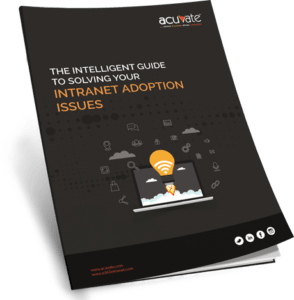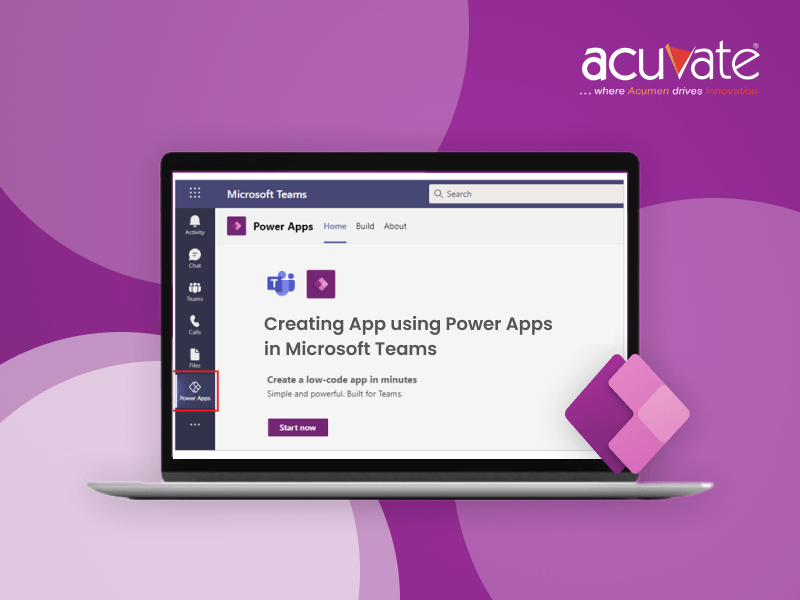Modern Digital Workplace
Modern digital workplace has changed the face of communication and collaboration between employees working at various levels of an organization. The effective use of social networking, mobile, data and cloud technology has transformed every aspect of our personal and business lives, making them more connected by the day.
As workplace demographics are changing, organizations are struggling to meet the evolving needs of a multi-generational workforce. To manage developing business needs, distributed teams, and a complex threat environment, we must embrace new digital technologies and maintain a collaborative modern digital workplace.
Read More: Top 8 Digital Workplace Trends for 2019
Organizations are investing massive amounts in digital workplace solutions, especially intranets, to improve their internal collaboration amplifying key employee engagement metrics. Every intranet solution ultimately has objectives defined to justify the ROI, improve work efficiency, increase productivity levels and minimize the gap between various levels of the organization.
Despite the clear benefits an intranet brings, user adoption still remains a major issue both for the intranet vendors and end users. The real problem occurs when the end users don’t find the solution useful in their day to day routine and shelf it or revert back to old traditional methods.
A report by Gartner reveals that at least 40% of intranets fail to deliver a return on investment due to inadequate adoption.
So why are many organizations struggling to build a useful, engaging intranet environment? Let us take a sneak peek into some points that appear as a challenge for user adoption.
6 Reasons Why Intranets Are Facing Low User Adoption Rates
1. Lack Of Consideration For Employee Needs
Building an organization intranet requires you to think about the needs of all the stakeholders. Often organizations neglect to consider the changing needs of their employees during the initial phases of intranet implementation. For example, if your workforce is one among those companies dealing in multiple geo locations – planning a standard intranet without much of a focus on collaboration and social elements wouldn’t serve the purpose at all costs.
Talk to your end users and consider gathering insights around their expectations and needs that bring in ease to their existing processes. Leverage those insights and formulate a nearly perfect intranet that addresses their needs.
2. Not Making The Intranet A Central Knowledge Hub
Getting the scattered data that is isolated between shared drives, knowledge base and other digital data to one place is one of the most valuable benefits of an intranet in the first place. Your intranet needs to be the central hub for all the information.
But, if the information is spread elsewhere and documents, data and resources aren’t kept up to date on the intranet platform, what’s the point?
Develop your intranet as a go-to place for the latest data and organisations information. Create easy navigation and tag them appropriately to make the search results effective. This amounts to both the search capability and adoption enhancements.
3. Complicated Navigation
Maintaining tonnes of content on your intranet for employees to utilise is great. But, some intranets suffer from poorly structured content with complicated site navigation. All of which drives employees away from using the intranet.
Navigating an intranet need to be instinctual, requiring little effort that it almost goes unnoticed. Organizing similar content together and creating visible, useful links across the site can bring better navigation.
Keep in mind that many intranets come with a standard navigation scheme, being able to customize the navigation over time and structure it with necessary content will make a world of a difference.
4. Ineffective Search Feature
It is estimated that 19% of all working hours in the modern enterprise are wasted looking for the materials and knowledge needed to do a job. How annoying is it if we cannot find the information that an employee is looking for in his critical time!
If employees don’t get the searched information with ease, they’ll quickly become frustrated and engagement rates will eventually fall.
“Search” is everything in an intranet. Having a social intranet software with robust search engines can avoid disappointment in the searching mechanism. Further, as mentioned above, tag your content with relevant keywords that can come handy while someone is searching for the relevant information.
By 2018, the ability to rapidly create and retrieve relevant content (knowledge) will be a key attribute of leading enterprises – Gartner
5. Inadequate Intranet Education
Detailed usage training and making the employees realize the real benefit of an intranet is often a neglected step. This may result in low user adoption rates and shelving the intranet without realizing the full potential. Eventually, this may end in fizzling out the entire initiative.
Employees need basic training to understand new systems, processes and technologies. Tailor your training needs according to your stated intranet objectives. Such kind of mapping can guarantee the success of your intranet apart from exploiting it to the fullest.
That being the case, ensure that employees know how to use the intranet to its brimful potential – that can be one of the first things you need to do which might not take up a lot of time. Create effective intranet content, FAQ pages, videos which helps employees to understand the different sections of intranet and their intended usage.
6. Lack Of Personalization
An intranet will not appeal attractive and compelling to the end user until and unless there is some essence of personalization in it. People love to see things as they want to, thus not being able to change the look and feel of the intranet, lack of customizable features will always affect the adoption rate. Allow employees to subscribe to their area of interest rather than broadcasting every message related to the organization.
Conclusion
Likewise, with any new technology initiative, there might always be a challenge that can get in the way of success. There are similar challenges that can impede an intranet’s success. However, with these simple practices, you can safeguard your intranet investment and expect a better ROI.
Understanding the challenges, reasons for intranet failure and looking at the modern features in a platform before you deploy can give your intranet a better chance of success from the beginning. This means that organizations need to invest serious effort into finding the best solution that best fits their specific business objectives. If you already have an intranet, do a gap analysis of the fitment and expectations mismatch. This will give you enough headroom to vision the future of the intranet initiative.
Learn More: A buyer’s guide to choosing the best intranet software
Looking to boost your intranet adoption? Check out Mesh – An intelligent intranet solution helps you to boost employee engagement and productivity making your internal communications seamless. If you’re interested in getting personalized tips get connected to our experts!




